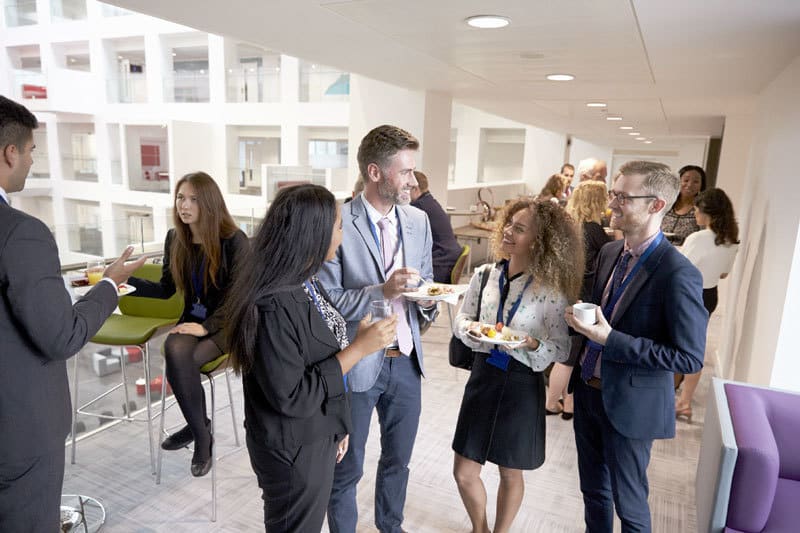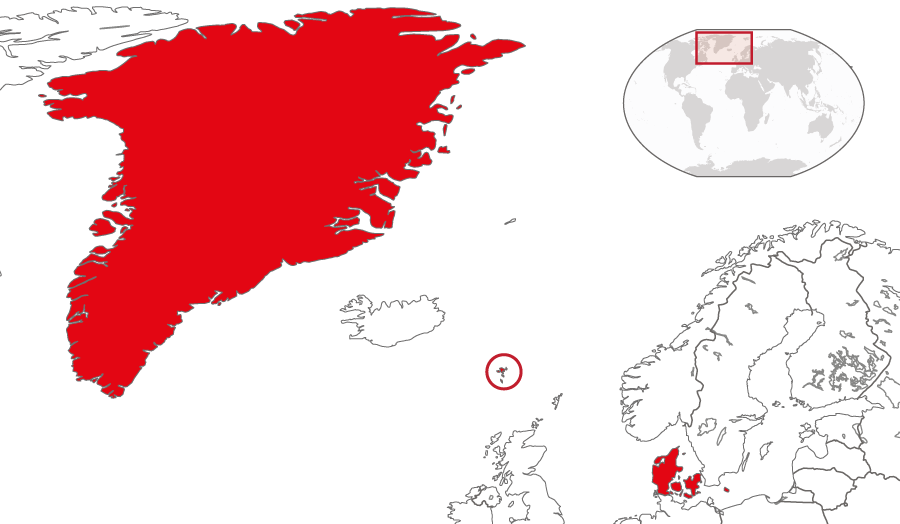Denmark is a free-market capitalist economy with a strong social welfare safety net for its citizens. It is rated among the world’s very best locations for doing business.

Once the seat of Viking raiders and later a major north European power, Denmark has evolved into a modern, prosperous nation that is participating in the general political and economic integration of Europe. It joined NATO in 1949 and the EEC (now the EU) in 1973.
However, the country has opted out of certain elements of the European Union’s Maastricht Treaty, including the European Economic and Monetary Union (EMU), European defence cooperation, and issues concerning certain justice and home affairs.
Doing Business in Denmark
A pro-business environment in a social welfare state
While Denmark’s strong social welfare network is famous all over the world, the country is also an excellent place to do business. Denmark’s trading traditions go back hundreds of years, and even within Scandinavia the Danes are known as a culture that enjoys a good business deal.
Denmark offers a pool of talented professionals who speak English well. The labour market is flexible, making it easy to hire and fire employees, and there is less litigation than in some other developed countries. Meanwhile, the business infrastructure is top-class, with reliable supplies of electricity and water and a well-developed financial system.

What the surveys say about Denmark’s business environment
In its most recent survey the World Bank calls Denmark No. 1 in Europe and No. 4 in the world for ease of doing business.
And despite the taxes necessary to support the social welfare state, Denmark comes in 7th in the world on the most inviting countries for capital investment (Best Countries for Business 2019, Forbes Business Magazine).
World-class R&D, with a focus on Cleantech and Life Science
Denmark is home to world-class companies in several industries, with a particular focus on renewable energy. More than 40 years of ambitious energy policies have helped put Denmark in the forefront of “cleantech”, and the country has a goal of being completely independent of fossil fuels by 2050.
Denmark also has one of the strongest clusters in the world when it comes to biotech and life science, based on robust public-private partnerships.
Food innovation is another Danish industry with an impact both nationally and internationally. Danish food products offer high quality and exemplary hygiene and safety. No wonder some of the world’s best chefs and restaurants can be found in Denmark.
Danish corporate culture is characterised by among others flat hierarchy, working in a team, flexible working hours, acting proactive and informal tone of communication and can be very different from what you are used to from home. Understanding it will make it easier for you to adjust to a new workplace culture and interact with your new colleagues.
Flat hierarchy
The hierarchy can be more flat and invisible than you are used to so far, and therefore hard for you to see, for example in the office layout. This means that there is an implied hierarchy, and decision lines are not obvious. Everyone knows who is in charge, just without showing it. Therefore, it is important for you to ask and find out who the immediate manager is as well as the general layout of the hierarchy in the company.
Working in a team
The Danish way of working is very often in a team function, and everybody is expected to pitch in with ideas and opinions. Assignments are developed together with your colleagues, and you are free to contribute with you own ideas and opinions. However, you are expected to carry out your own individual tasks, and you have the responsibility to deliver the assignments in time.
Flexible working hours
In Denmark, a standard workweek consists of 37 hours of work usually carried out from Monday to Friday.
It is more important that you meet your deadlines and show up on time at meetings than when or where you carry out your work. This keeps stress at a minimum and creates commitment in the Danish workplaces. Employees in a Danish workplace are expected to show a high degree of independence, for example planning the tasks at hand.
In some workplaces, this high degree of independence also includes managing own working hours. In that case, the employer trusts the employee to plan both for the benefit of the company as well as the work-life balance of the employee. The main purpose of this is for the employees to be able to plan a life outside work.
Acting proactive
Responsibility is often shared between team members when working in a team. Even if someone else takes the lead on an assignment, the other team members still have an obligation to help the team succeed in completing the assignment.
The responsibility is both for you as an individual and for you as a part of a team. Once you have accepted an assignment, you are expected to keep your manager updated if you do not have the resources to complete the assignment.
It is important to show initiative when you stumble upon problems in your work life. Do not leave other people to take care of it.
Your initiative can be shown in a specific assignment where you solve a problem that you come across in your work process. But you can also show your initiative by acting on a small practical matter. For example, the printer is low on ink, and you change the ink instead of waiting for others to take care of it.
Informal tone of communications
When introducing yourself, you can use your full name if you like. After the first introduction it is standard for everyone to use your first name. Yes, also to the person in charge.
Also your title and status are not overly important in your everyday work life. In fact, it is common to be humble about your status. Your colleagues will ask if they want to know more about your academic background.
Remember that your closest colleagues can sometimes have a humorous approach to you.
The Kingdom of Denmark
What role does the Danish Monarchy have?
Denmark is one of the oldest states in Europe and the oldest kingdom in the world. The current monarch, Queen Margrethe II – who became regnant in April 1972 – can also point to the oldest lineage in Europe, dating back to early 900 AD and Viking King Gorm. The Queen is very popular among Danes and visitors alike. During major royal festivals thousands of people gather in the square in front of Amalienborg Castle to wave flags and cheer for the Queen and her family.
The Danish language belongs to the northern branch of the Germanic language group, and bears a strong resemblance to other Scandinavian tongues. Famed Danish writers include Hans Christian Andersen, whose fairy tales have been translated into more languages than any other book except the Bible; the theologian and philosopher Søren Kierkegaard, a forerunner of modern existentialism; and Karen Blixen, who penned “Out of Africa” and “Babette’s Feast”.


You cannot stay long in Denmark without noticing the importance of the royal family.
Countless public events are marked with a royal presence and the Danish flag, Dannebrog, is flown on numerous occasions to celebrate the royals’ birthdays.
Being a constitutional monarch means that Her Majesty Queen Margrethe II cannot independently perform political acts. Although she signs all Acts of Parliament, these only come into force when they have been countersigned by a Cabinet Minister.
She also participates in the formation of a new government when the so-called “dronningerunde” takes place as a consultation with representatives of the political parties, after which the party leader who has the support of the largest number of seats in the Danish Parliament is invited to form a government.
Once a government has been formed the Queen formally appoints it.
As the Queen is the formal Head of Government, she presides over the State Council where acts passed by the parliament are signed and officially become new laws.
The Queen is informed of the latest political developments by the Prime Minister and the Minister of Foreign Affairs and she also hosts official state visits by foreign heads of state and pays state visits abroad in return.
A big event – at least for the new foreign country ambassadors – is the official reception of them when they present their credentials before starting their work in Denmark.
This ceremony is performed according to the old tradition of a horse carriage ride to meet the Queen escorted by the mounted Guard Hussar regiment.
Geography of Denmark

- The Kingdom of Denmark is located in Northern Europe, bordering the Baltic Sea, the North Sea, and Germany.
- Its total area is 43,094 square kilometres (most of it in the form of land).
- Denmark’s total population is 5,556,452 (as of July 2013), Most of which are Scandinavian, Inuit, Faroese, German, Turkish, Iranian, and Somali ethnic groups.
- The Kingdom of Denmark is a unitary state that comprises, in addition to Denmark proper, two autonomous territories in the North Atlantic Ocean: Greenland and the Faroe Islands.
Greenland and the Faroe Islands
- Greenland and the Faroe Islands have been integrated parts of the Danish Realm since the 18th century; however, due to their separate historical and cultural identities, these parts of the Realm have extensive political powers and have assumed legislative and administrative responsibility in a substantial number of fields.
- Home rule was granted to the Faroe Islands in 1948 and to Greenland in 1979, each having previously had the status of counties.
- Greenland and the Faroe Islands have their own home governments and parliaments and are effectively self-governing in regards to domestic affairs apart from the judicial system and monetary policy.
- High Commissioners (Rigsombudsmand) act as representatives of the Danish government in the Faroese Løgting and in the Greenlandic Parliament, but they cannot vote.
- The Faroese home government is defined to be an equal partner with the Danish national government, while the Greenlandic people are defined as a separate people with the right to self-determination.
